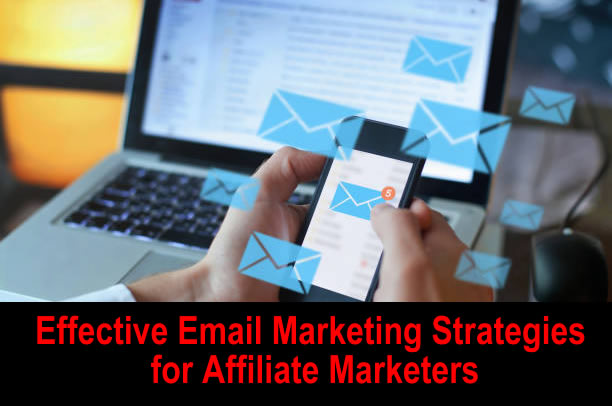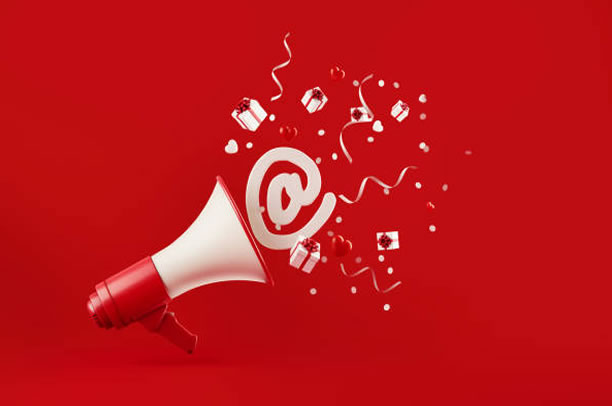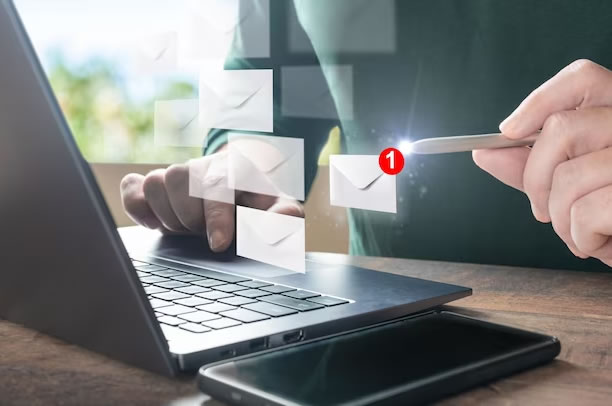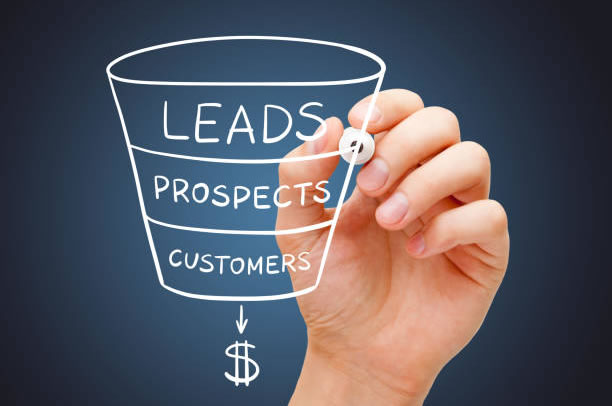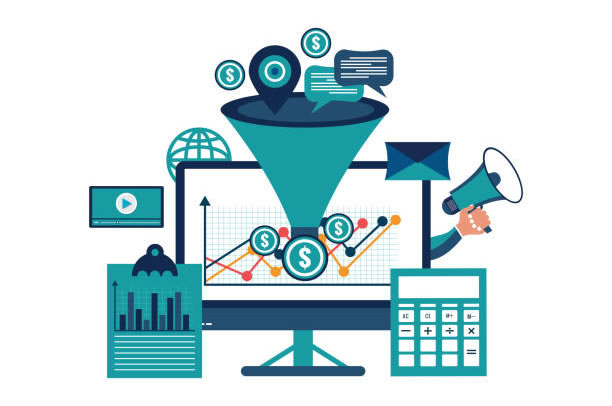Effective Email Marketing Strategies for Affiliate Marketers
Introduction
Email marketing has stood the test of time as one of the most potent tools in an affiliate marketer’s arsenal. With the power to reach a vast audience, build relationships, and drive conversions, it’s a strategy no affiliate marketer can afford to overlook. In this comprehensive guide, we’ll explore the most effective email marketing strategies tailored specifically for affiliate marketers. By the end of this article, you’ll have the knowledge and tools to supercharge your affiliate marketing efforts using email campaigns.
The Power of Email Marketing in Affiliate Marketing
Email marketing is a tried-and-true method that remains highly relevant in the digital age. It serves as a direct line of communication with your audience, allowing you to build trust and generate sales. In this section, we’ll delve into why email marketing is crucial for affiliate marketers and how it can be the linchpin of your success.
The Power of Email Marketing Email marketing is a cost-effective and highly efficient way to engage your target audience. It provides a direct channel for communicating your message, nurturing leads, and ultimately driving sales. In the world of affiliate marketing, where competition is fierce, building a loyal audience is key to long-term success.
The Benefits of Email Marketing for Affiliate Marketers Affiliate marketers can reap numerous benefits from email marketing, such as building a loyal customer base, increasing brand visibility, and boosting conversion rates. The ability to create targeted and personalized campaigns makes email marketing an indispensable tool.
Building a Quality Email List
A successful email marketing campaign starts with a high-quality email list. In this section, we will explore the strategies affiliate marketers can use to build a list of engaged and interested subscribers.
Creating Irresistible Lead Magnets
To entice potential subscribers, you need to offer them something of value. Lead magnets, such as eBooks, webinars, or exclusive discounts, are an excellent way to incentivize visitors to join your email list. The key is to make your lead magnet relevant to your niche and appealing to your target audience.
Opt-in Forms and Landing Pages
Opt-in forms and landing pages are where visitors provide their email addresses. These must be well-designed, easy to use, and clearly explain the benefits of joining your list. Ensure that the sign-up process is straightforward, as a complicated procedure can deter potential subscribers.
Segmentation and Personalization
Segmenting your email list allows you to send targeted content to specific groups of subscribers. This increases the relevance of your emails, resulting in higher engagement and better conversion rates. Personalization, from using the subscriber’s name in the email to tailoring content to their preferences, goes a long way in building a strong connection.
Crafting Compelling Email Content
Once you have a solid email list, the next step is to create content that keeps your subscribers engaged. This section will provide insights into crafting compelling email content that drives affiliate marketing success.
Engaging Subject Lines
The subject line is your first opportunity to grab your subscriber’s attention. Make it compelling, concise, and relevant to the content inside the email. Using action words and addressing pain points can be effective techniques.
Valuable and Relevant Content
Your emails should offer value to your subscribers. This can be in the form of educational content, product recommendations, or exclusive offers. It’s essential to stay relevant to your niche and audience’s interests.
Call-to-Action (CTA)
Every email you send should have a clear and persuasive call to action. Whether it’s encouraging your subscribers to click on an affiliate link, make a purchase, or share your content, a well-crafted CTA is vital for driving conversions.
Automation and Sequences
Email automation can save you time, improve efficiency, and boost the impact of your campaigns. In this section, we’ll explore how affiliate marketers can harness the power of email automation and sequences.
Drip Campaigns
Drip campaigns are a series of automated emails sent to subscribers at predefined intervals. They allow you to nurture leads, provide ongoing value, and build trust over time. For affiliate marketers, drip campaigns can be tailored to guide subscribers toward making a purchase.
Behavior-Based Triggers
Behavior-based triggers enable you to send emails based on your subscribers’ actions. For example, if a subscriber clicks on a specific product link in your email, you can set up an automated follow-up email with more details about that product. This targeted approach can significantly increase conversion rates.
Segmented Automation
Segmentation and automation go hand in hand. By segmenting your list and sending targeted, automated emails, you can provide content that directly addresses the interests and needs of specific groups within your audience.
Measuring and Analyzing Email Campaigns
To refine your email marketing strategy, it’s essential to track and analyze your campaigns. In this section, we’ll discuss the key metrics to monitor and how to leverage this data to optimize your affiliate marketing efforts.
Key Email Metrics
Understanding metrics like open rates, click-through rates, conversion rates, and unsubscribe rates is crucial. These insights help you gauge the performance of your email campaigns and identify areas for improvement.
A/B Testing
A/B testing involves sending two variations of an email to a small portion of your list to determine which one performs better. By analyzing the results, you can refine your emails for maximum effectiveness.
Email Marketing Tools
There are various email marketing tools available that can simplify tracking and analyzing your campaigns. Popular choices include Mailchimp, AWeber, and Constant Contact. These tools offer features like email automation, analytics, and integration with affiliate tracking software.
Compliance and Best Practices
To maintain a positive reputation and stay compliant with regulations, it’s vital to follow best practices in email marketing. In this section, we’ll cover the dos and don’ts for affiliate marketers.
Compliance with Regulations
Ensure that your email marketing complies with the General Data Protection Regulation (GDPR) and the CAN-SPAM Act. These regulations set rules for consent, transparency, and opt-out options for subscribers.
Transparency and Honesty
Honesty is the best policy. Clearly state your affiliation with products or services in your emails. Misleading your subscribers can erode trust and harm your long-term success.
Unsubscribe Option
Always provide an easy and clear way for subscribers to opt out of your emails. Failing to do so can lead to complaints and even legal issues.
Leveraging Affiliate Marketing Networks
Affiliate marketing networks can be valuable partners in your email marketing strategy. In this section, we’ll explore how to collaborate with these networks for mutual benefit.
Selecting the Right Affiliate Programs
Choose affiliate programs that align with your niche and audience. Ensure that the products or services you promote are relevant and valuable to your subscribers. This will result in higher engagement and conversion rates.
Negotiating Exclusive Deals
Affiliate marketing networks often have exclusive deals that you can offer to your subscribers. These special offers can be highly attractive and provide an edge in your email campaigns.
Building Relationships
Establish strong relationships with affiliate program managers and network representatives. This can lead to more personalized support, exclusive promotions, and better affiliate terms.
Conclusion
Email marketing remains an indispensable tool for affiliate marketers looking to build long-term success. By creating a high-quality email list, crafting compelling content, leveraging automation, analyzing your campaigns, and following best practices, you can supercharge your affiliate marketing efforts. Collaborating with affiliate marketing networks can also provide unique opportunities to drive sales and revenue.
Remember that mastering email marketing is an ongoing process. Stay updated with the latest trends and technologies in the field, and always be responsive to your audience’s feedback and needs. With dedication and the strategies outlined in this guide, you can achieve outstanding results in your affiliate marketing endeavors.
FAQ
Q1: Can I use purchased email lists for affiliate marketing?
A1: It’s strongly advised not to use purchased email lists. These lists are often of low quality and can result in high bounce rates, spam complaints, and damage to your sender’s reputation. It’s best to build an organic and engaged email list from scratch.
Q2: How often should I send emails to my subscribers?
A2: The frequency of your emails should align with your audience’s expectations and preferences. Some audiences may appreciate weekly updates, while others may prefer monthly newsletters. It’s essential to find the right balance to keep your subscribers engaged without overwhelming them.
Q3: What’s the best way to ensure my emails don’t end up in the spam folder?
A3: To avoid the spam folder, follow best practices, such as obtaining proper consent, using a recognizable “from” name and email address, including an unsubscribe option, and ensuring your content is relevant and engaging. Regularly monitor your email deliverability and sender reputation to maintain a healthy inbox placement rate.


